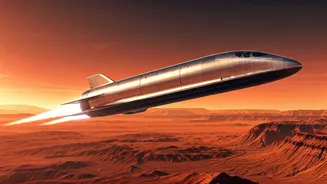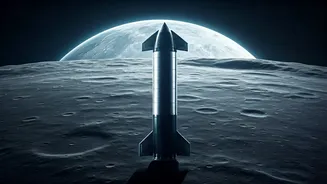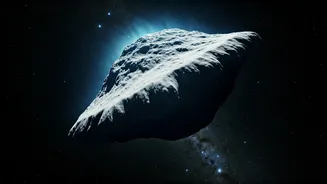ESCAPADE Launch Details
The ESCAPADE mission, a significant project by NASA, is slated for launch on November 9th. This launch will be carried out by Blue Origin's New Glenn rocket.
The launch site is located at Cape Canaveral Space Force Station in Florida. The primary objective of the mission is to dispatch twin orbiters. These orbiters are designed to delve into the magnetic field of Mars. This mission represents a collaborative effort aimed at expanding our knowledge of the Martian environment, promising crucial data to enhance our understanding of the planet's structure and behavior.
Mission Objectives Unveiled
The core of the ESCAPADE mission revolves around deploying twin orbiters to conduct an in-depth study of Mars' magnetic field. This research is anticipated to provide vital data, enabling scientists to gain a more profound grasp of the planet's atmospheric dynamics. The mission's objectives extend beyond simple observation; they aim to provide detailed information about the Martian magnetosphere. The data gathered will offer unique insights into how Mars interacts with solar winds and the effects of space weather. The mission's findings are expected to enhance our knowledge of Mars' evolution and its capability to support life.
Launch Vehicle: New Glenn
Blue Origin's New Glenn rocket has been chosen to transport the ESCAPADE mission into space. This selection underscores the confidence in the rocket's capabilities and its suitability for this type of mission. The launch will take place from Cape Canaveral Space Force Station, a strategic location with extensive facilities required to manage and support complex launches. As the launch date approaches, the rocket will be prepared for its role. The New Glenn rocket's performance and reliability are crucial for the successful deployment of the ESCAPADE orbiters, thereby initiating the scientific investigation of Mars' magnetic field.
Twin Orbiters' Role
The ESCAPADE mission's effectiveness is anchored by the dual orbiters. These spacecraft have been designed to execute simultaneous observations. This approach offers a comprehensive understanding of the Martian environment. The orbiters will circle Mars, measuring properties of the planet's magnetic field and its interaction with solar winds. The mission architecture is deliberately configured to collect data from different vantage points, thereby yielding a clearer, more complete picture of the magnetic field. They will be actively monitoring variations and dynamics in the magnetosphere, essential to solving crucial questions.
Mars' Magnetic Mysteries
Mars lacks a global magnetic field like Earth's, but it has localized magnetic areas. The ESCAPADE mission seeks to unravel these puzzles, investigating how the remnants of the magnetic field shape the planet's interaction with the Sun's energy. Researchers are eager to understand how the planet's atmosphere and surface have developed over time. By studying the magnetic field, scientists hope to learn more about the past environments and climate. The mission aims to help us understand why Mars transformed from a potentially habitable world to its present state.













